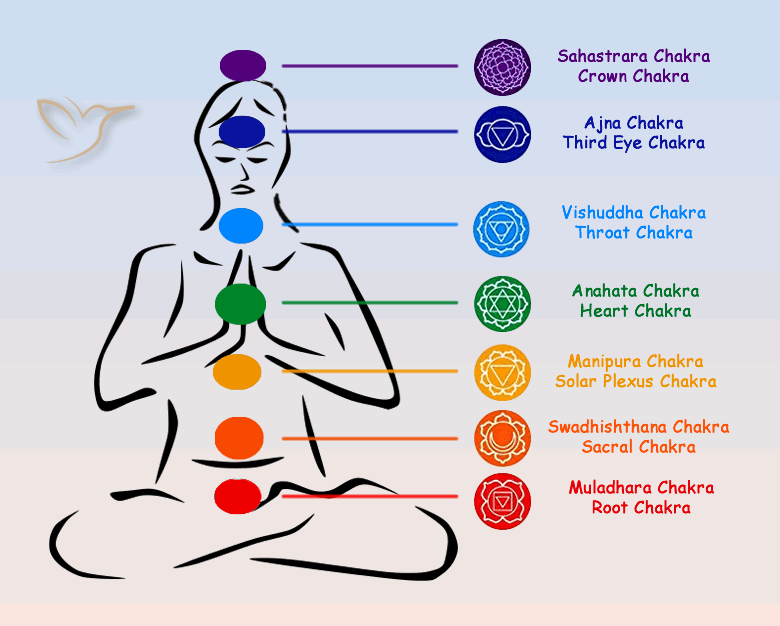What can I find in this article?
- Garnet Species / Varieties
- Garnet Colors
- Garnet Clarity
- What is the spiritual meaning of garnet?
- Garnet and the Chakras
- Health benefits of Garnet
- Garnet Price
- Garnet Discovery
- How is Garnet formed?
- Where are Garnets found?
- Can Garnet be treated?
- What jewelry is Garnet suitable for?
- Is Garnet a birthstone?
- Did You Know? Interesting facts about Garnet
- How to care for Garnet.
- How can you tell a real Garnet?
- Can a Garnet change color?
- Garnet - Gemological Properties
Garnet Gemstone Information

Introduction
"The garnet is a red gem, but not like the ruby, its red is much more like that of a flame ... If correctly cut and polished it will reveal all its beauty and perfection."
Aristotle wrote this about garnets over 2000 years ago, but our admiration for this gemstone continues today, and we have discovered there is much more to this gem than just a flaming red.
Garnets are the “modern family” in the gemstone world - not a simple chemical formula with one or two color-causing impurities, but a large gem family with many mineral “relatives.”
This group of closely related minerals has given us a variety of gemstones that appear in almost every color, most famously red but also outstanding greens, oranges, pinks, even purples and, despite what some say, some rare blues.
Garnets share the same crystal structure made of silica and oxygen, with assorted elements creating the different varieties. This forms dozens of subgroups, but only a few are important for gemstone collectors.
Garnet is divided into a number of species, but here we will focus on those used for gemstones. Other garnet types have industrial uses, like abrasives or waterjet cutting.
There are six generally accepted species of garnet, summarized here:
- Almandine – usually dark red to reddish brown, the hardest garnet, commonly faceted for jewelry. Read more about Almandine Garnet
- Pyrope – the deep red variety, often mistaken for ruby, highly valued. Discover Pyrope Garnet
- Spessartite – bright orange, known for excellent brilliance. Learn about Spessartite Garnet
- Grossular – colorless in pure form, but impurities create shades including green Tsavorite, one of the most valuable garnets. Read about Grossularite Garnet
- Andradite – the most lustrous garnet, coming in green or black forms, including highly prized Demantoid. Understand the brilliance of Demantoid Garnet
- Uvarovite – a rare green garnet usually found in tiny crystals. Discover Uvarovite Garnet
These six species form the core “family,” but trade names and color blends create even more names and categories. For example, Rhodolite is a pyrope–almandine mix with a purple hue.
See the color range of Rhodolite Garnet.
Malaya is a pink-orange pyrope–spessartite blend, sometimes called Imperial Garnet, and Color-Change garnets from Madagascar and Tanzania shift color depending on the light source.
Meet Color Change Garnet here.
Other names include Star Garnet, mostly opaque with a star effect, See our Star Garnet Guide here, plus trade names like Mandarin, Mint, Gooseberry, Native Sunset, or Masai Blue - sometimes invented by marketing.
The green Tsavorite garnet, the orange colored Hessonite, and greenish yellow Mali garnet are also popular options.
Tsavorite from East Africa can fetch up to $5,000 per carat. Demantoid from Russia, with its signature “horsetail” inclusions, is one of the rarest and can cost thousands per carat.
See more rare types on our Rare Garnets page.
Explore our full selection of garnet gemstones here.

Most people think of red when they hear “garnet,” but they occur in nearly every color. Their varied chemical makeup explains this diversity. Iron typically gives red and brown tones, manganese orange or pink, chromium and vanadium green, and calcium yellows.
Some garnets even get color directly from their atomic structure, not impurities. Combinations can create unusual purples, while plain blue garnets without color-change remain unknown.
Rare colors include orange-red Mandarin spessartite, rich green Tsavorite and Demantoid, and color-change garnets from Madagascar and Tanzania shifting from blue to red under different light. These rare hues are usually the most valuable.
Eye-clean garnets are the norm, especially for red varieties, since garnets are relatively plentiful. For rare types like Demantoid or Tsavorite, inclusions are more accepted. In fact, the unique “horsetail” inclusions in Russian Demantoid even add value, signaling their origin.
Uvarovite, which is usually opaque, does not follow normal clarity rules. Tsavorite garnet generally should be as clean as possible, but large stones with minor flaws are still highly prized.
Garnet has been treasured since the Bronze Age for its protective and balancing energies. Traditionally, red garnet symbolized friendship, and exchanging garnet jewelry promised a future reunion. Travelers wore them as amulets to protect against disease or attack.
Find its spiritual and traditional powers in our Garnet Meaning and Powers section.
Today, garnet is still seen as a stone of balance, confidence, and spiritual strength. Its many species are thought to have subtle differences - Grossular, for instance, brings joy and romance; Almandine gives courage and stability; Pyrope kindles passion and creativity. Color energies matter too: green garnet supports growth and renewal, orange fosters happiness, and purple inspires wisdom.

Chakras are energy centers in the body. Red garnets resonate strongly with the root chakra for grounding and safety, while green garnets connect with the heart chakra to encourage growth and compassion. Other garnet colors can align with additional chakras: orange for the sacral, yellow for the solar plexus, and so on.
Garnet is traditionally called the “stone of health” for its energizing and detoxifying benefits. Historically, it was thought to support circulation, regulate blood pressure, and strengthen the heart. Modern crystal users still see it as a revitalizing crystal. It may also help with arthritis and pain relief.
Ways to use garnet include wearing it, placing it on chakra points during meditation, carrying it as a touchstone, or even decorating your space with it. Recharge garnets occasionally by rinsing under flowing water and placing them with other crystals to restore energy.
Disclaimer: These traditions are not medical advice. If you have health concerns, consult a qualified doctor. GemSelect does not guarantee any crystal healing claims.
Garnets range in price from a few dollars per carat for common red pyrope to thousands per carat for Demantoid or Tsavorite. Quality, rarity, and origin determine value. The most prized Demantoids, for example, come from Russia and feature distinctive horsetail inclusions.
Ready to shop? Visit our Garnet Buying Guide.
Garnets are one of the most ancient gemstones known to man, with a history that goes back more than 5,000 years and discovered amongst the artifacts of Ancient Egypt and Sumeria.
The Ancient Greeks and Romans traded with Eastern Empires for red garnets which were probably mined in India and Sri Lanka well before the birth of Christ. In the holy book of the Jewish people, the Talmud, a large red garnet was the only light on Noah's ark.
Chemical analysis shows many garnets in the Mediterranean world came from South Asia, while garnets discovered in northern Europe were mined in what is now the Czech Republic and Russia.
The modern name garnet was introduced by philosopher Albertus Magnus in 1270, describing the mineral as granatus, meaning seed or grain, probably because the crystals resembled pomegranate seeds.
In more modern times, Russia’s Ural Mountains became famous for producing stunning Demantoid garnets, prized for their brilliance. Likewise, Tsavorite was found by Campbell Bridges in East Africa, later named for Kenya’s Tsavo National Park. Find more rare types on our Rare Garnets page.

Garnets form under intense heat and pressure as continental plates collide, melting and reforming rock. As it cools, garnet crystals solidify in cracks of the surrounding metamorphic material. Over millions of years, erosion may wash them into riverbeds where they can be alluvially mined, or they are excavated directly from the host rock in hard-rock mining operations.

Garnet minerals are common worldwide, but gem-quality garnets are more selective. Demantoid comes from Russia and Namibia; Tsavorite from Kenya and Tanzania; Rhodolite from India and Sri Lanka; Mandarin garnet from Namibia. Large industrial garnet deposits are worked in Australia, India, the U.S., and China for abrasives and water filtration.
Garnet is one of the few gemstones not generally treated apart from normal cutting and polishing.
There are occasional reports of mild heat treatment to improve color and clarity of Demantoid garnets from Russia, but these treatments are very subtle and hard to detect, so reputable sellers should disclose any known enhancements.

Garnets rate between 6.5 and 7.5 on the Mohs scale, making them suitable for rings, earrings, pendants, and other jewelry. While they are fairly tough, protective settings like bezels are a good idea for high-value garnets such as Tsavorite or Demantoid. Learn more about gemstone durability in our Gem Hardness Guide.
Garnet gems can complement nearly any metal alloy thanks to their wide color palette, but avoid exposing garnets to hard impacts or harsh chemicals. Store them separately from other gems to prevent scratches.
Garnet is the modern birthstone for January and has been linked to zodiac signs and talismans since ancient times. Garnet jewelry has been exchanged as gifts for centuries, symbolizing friendship and safe journeys.
Any one of the many garnet varieties makes a wonderful gift for someone born in January or as a traditional second anniversary gemstone.
-
Let nature do the work
In Arizona, ants digging new nests push out tiny garnets they cannot move through. Rain then washes these to the surface, making them easy for locals to collect - these are called Anthill Garnets!
- Garnet is the perfect gift for a second wedding anniversary.
- Ancient Roman nobles used carved garnet rings as wax seals for documents.
-
Keeping Mum
Red garnet necklaces were found buried with Pharaohs in Egypt to accompany them in the afterlife.
-
Whose side are you on?
During the Crusades, both Christian and Muslim warriors carried garnet talismans for courage, earning it the name “Warrior Stone.”
-
Biggest garnet ever found in NYC
A 10-pound garnet was unearthed under New York in 1885, used as a doorstop before ending up in the American Museum of Natural History.
-
The largest Tsavorite ever found
A 325-carat flawless Tsavorite from East Africa is worth more than $2 million.
-
Gemstone Viagra?
Legend says placing garnets on certain areas of the body could help men in the bedroom - a trick even mentioned in 17th-century royal letters.
Use warm, soapy water with a soft brush to clean garnets. Professional ultrasonic machines are possible but risky since vibrations can loosen gemstone settings. Rinse thoroughly and dry with a soft cloth rather than air drying to maintain sparkle.
Keep garnets stored separately, in lined jewelry boxes or soft bags, to protect both the garnet and neighboring gems. Parcel papers and foam-lined jars also work if you wish to organize a collection.

The safest route is to buy from a reputable source. Red pyrope garnets are affordable and often un-certified, but higher-value gems like Tsavorite or Demantoid should include gem lab reports or be independently certified. Real garnets will show subtle rainbow reflections and resist scratches from steel or nails, since they measure about 7 on the Mohs scale.
If you are spending thousands, always request a certificate or have the stone tested by a lab. At GemSelect, we offer quick verification reports from the Asian Institute of Gemological Sciences (AIGS) and Burapha Gemological Laboratory (BGL).
Some rare garnets change color dramatically under different lights. Most notable are those from Madagascar and Tanzania that appear blue-green in sunlight and purple-red indoors. These color-change garnets are extremely prized. Meet Color Change Garnet.
|
Chemical Formula: |
General A3B2(SiO4)3 |
|
Crystal Structure: |
(Cubic) rhombic dodecahedron, icositetrahedron |
|
Color: |
All colors |
|
Hardness: |
6.5 - 7.5 on the Mohs scale |
|
Refractive Index: |
1.714 - 1.888 |
|
Density: |
3.47 - 4.15 |
|
Cleavage: |
Indistinct |
|
Transparency: |
Translucent to opaque |
|
Double Refraction or Birefringence: |
Usually none |
|
Luster: |
Vitreous |
|
Fluorescence: |
Mostly none |

